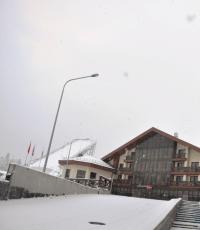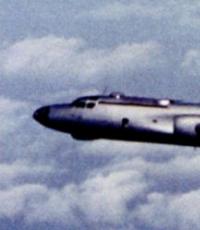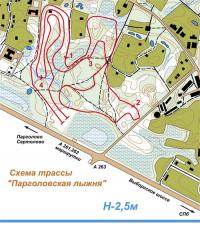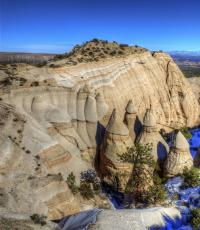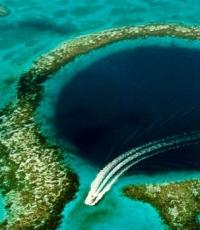Information about the winter palace. Winter Palace. Winter Palace in the 20th century
Where did the tradition of dividing the houses of monarchs into winter and summer ones come from? The roots of this phenomenon can be found in the times of the Muscovite kingdom. It was then that the tsars first began to leave the walls of the Kremlin for the summer and go to breathe the air in Izmailovskoye or Kolomenskoye. This tradition was carried over by Peter I to the new capital. The Emperor's Winter Palace stood where the modern building is, and the Summer Palace can be found in the Summer Garden. It was built under the direction of Trezzini and is, in fact, a small two-story house with 14 rooms.
From house to palace
The history of the creation of the Winter Palace is not a secret for anyone: Empress Elizaveta Petrovna, a great lover of luxury, in 1752 ordered the architect Rastrelli to build for herself the most beautiful palace in Russia. But it was not built in an empty place: before that, on the territory where the Hermitage Theater is now located, there was a small winter palace of Peter I. The wooden palace of Anna Ioannovna, which was built under the direction of Trezzini, replaced the house of the Great. But the building was not luxurious enough, so the empress, who returned the status of the capital to St. Petersburg, chose a new architect - Rastrelli. It was Rastrelli Sr., the father of the famous Francesco Bartolomeo. For almost 20 years, the new palace became the residence of the imperial family. And then came the very Winter, which we know today - the fourth in a row.
 Source: wikipedia.org
Source: wikipedia.org
The tallest building in St. Petersburg
When Elizaveta Petrovna wished to build a new palace, the architect planned to use the previous building for the foundation in order to save money. But the empress demanded to increase the height of the palace from 14 to 22 two meters. Rastrelli redid the building project several times, and Elizabeth did not want to transfer the construction site, so the architect had to simply demolish the old palace and build a new one in its place. Only in 1754 did the empress approve the project.
Interestingly, for a long time the Winter Palace remained the tallest building in St. Petersburg. In 1762, even a decree was issued prohibiting the construction of buildings in the capital higher than the imperial residence. It was because of this decree that the Singer company at the beginning of the 20th century had to abandon its idea to build a skyscraper for itself on Nevsky Prospekt, like in New York. As a result, a tower was built over six floors with an attic and decorated with a globe, creating the impression of height.
Elizabethan Baroque
The palace was built in the style of the so-called Elizabethan Baroque. It is a quadrilateral with a large courtyard. The building is decorated with columns, architraves, and the roof balustrade is lined with dozens of luxurious vases and statues. But the building was rebuilt several times, Quarenghi, Montferrand, Rossi worked on the interior decoration at the end of the 18th century, and after the infamous fire of 1837, Stasov and Bryullov, so baroque elements were not preserved everywhere. Details of the magnificent style remained in the interior of the famous front Jordan Stairs. It got its name from the Jordanian passage, which was nearby. Through it, on the feast of the Epiphany of the Lord, the imperial family and the higher clergy went out to the ice hole in the Neva. Such a ceremony was traditionally called "the march to the Jordan." Baroque details are also preserved in the decoration of the Great Church. But the church was ruined, and now only a large ceiling by Fontebasso with the image of the Resurrection of Christ reminds of its purpose.
 Source: wikipedia.org
Source: wikipedia.org
In 1762, Catherine II ascended the throne, who did not like the pompous style of Rastrelli. The architect was dismissed, and new masters took up the interior decoration. They destroyed the Throne Hall and erected a new Neva enfilade. Under the leadership of Quarenghi, the Georgievsky, or Great Throne Room, was created. For him, a small extension had to be made to the eastern facade of the palace. At the end of the 19th century, the Red Boudoir, the Golden Living Room and the library of Nicholas II appeared.
Difficult days of the Revolution
In the early days of the Revolution of 1917, sailors and workers stole a huge amount of treasures from the Winter Palace. Only a few days later the Soviet government guessed to take the building under guard. A year later, the palace was given over to the Museum of the Revolution, so some of the interiors were rebuilt. For example, the Romanov Gallery was destroyed, where there were portraits of all the emperors and members of their families, and films began to be shown in the Nicholas Hall. In 1922, part of the building went to the Hermitage, and only by 1946 did the entire Winter Palace become part of the museum.
During the Great Patriotic War, the palace building was damaged by air raids and shelling. With the outbreak of war, most of the exhibits exhibited in Zimny were sent for storage to the Ipatiev Mansion, the same one where the family of Emperor Nicholas II was shot. About 2,000 people lived in the Hermitage bomb shelters. They did their best to preserve the exhibits that remained within the walls of the palace. Sometimes they had to fish out china and chandeliers floating in flooded cellars.
furry guards
Not only water threatened to spoil the art, but also voracious rats. For the first time, a mustachioed army for the Winter Palace was sent from Kazan in 1745. Catherine II did not like cats, but she left the striped defenders at court in the status of "guards of art galleries." During the blockade, all the cats in the city died, which is why the rats bred and began to spoil the interiors of the palace. After the war, 5 thousand cats were brought to the Hermitage, which quickly dealt with tailed pests.

Probably, in our vast country there is no such person who would absolutely not know about the Winter Palace in the city of St. Petersburg, there are quite a few facts connected with it that change the course of the history of our history. The Winter Palace in St. Petersburg was erected in the middle of the eighteenth century especially for the Empress Elizabeth Petrovna according to the skillful design of the famous Italian architect Rastrelli in the lush Rococo style. At the end of construction, the palace complex consisted of a thousand rooms, 117 magnificent staircases and almost two thousand windows and doors. From the moment of its construction, the Winter Palace in St. Petersburg became the main imperial residence until the well-known events of the bloody revolution of the 17th year.

Brief description of the Winter Palace
During all the time, several buildings were attached to the Palace: the Small Hermitage, the Old and New Hermitage, the Hermitage Theater. At present, the Winter Palace in St. Petersburg is part of the famous museum complex of the State Hermitage. The architectural monument is a magnificent three-story rectangular building on Palace Square. The dimensions of the palace are amazing: the length is 210 meters, the width is 175 meters. The appearance of the Winter Palace is familiar from numerous images, probably to many people: the luxurious central gate with cast-iron gratings and side front entrances.

Halls of the Winter Palace
The Winter Palace in St. Petersburg delights with its decoration: a roof decorated with ancient gods and magnificent vases, graceful sculptures of Neptune and Amphitrite, majestic snow-white columns at the entrance. Inside, the Grand Throne and Concert Halls, the Malachite Living Room and many other chambers are open to tourists. And the State Hermitage, located in the vastness of the Palace, is the largest and richest museum in the world, which has a rare collection of paintings and antiquities.
The Winter Palace on Palace Square in St. Petersburg is the main attraction of the northern capital, which served as the official winter residence of Russian emperors from 1762 to 1904. In terms of richness and variety of architectural and sculptural decoration, the palace has no equal in St. Petersburg.


To get around all the exhibits of the Hermitage, you will need to spend 11 years of your life and walk 22 kilometers. All Petersburgers know well: in the main museum of the city on the first floor there is the Egyptian Hall, on the third floor there are the Impressionists. Guests of the city are also aware.
How will we surprise? You can try facts:
№1. The Hermitage is huge... Like the territory of a huge country ruled by the tsar, the autocrat of all Russia, straight from the walls of this luxurious palace. 1057 rooms, 117 stairs, 1945 windows. The total length of the main cornice that borders the building is almost 2 km.
№2. The total number of sculptures installed on the parapet of the Winter Palace is 176 pieces. You can count the number of vases yourself.
№3. The main palace of the Russian Empire was built by more than 4,000 masons and plasterers, marblers and stuccoists, parquet workers and painters. Receiving an insignificant payment for their work, they huddled in miserable shacks, many lived here, on the square, in huts.
№4. From 1754 to 1762, the construction of the palace building was going on, which at that time became the tallest residential building in St. Petersburg. For a long time ... Empress Elizaveta Petrovna died without settling in new mansions. Peter III took over 60,000 square meters of new housing.
№5. After the construction of the Winter Palace was completed, the entire square in front of it was littered with construction debris. Emperor Peter III decided to get rid of him in an original way - he ordered to announce to the people that everyone can take anything from the square, and for free. A few hours later, all debris was cleared away.
№6. Removed garbage - a new problem. In 1837 the palace burned down. The whole imperial family was left homeless. However, 6,000 unknown workers saved the day by working day and night, and in 15 months the palace was completely restored. True, the price of a labor feat is several hundred ordinary workers ...
№7. The Winter Palace was repainted in different colors all the time. It was both red and pink. It acquired its original, pale green color in 1946.
№8. The Winter Palace is an absolutely monumental building. It was intended to reflect the power and greatness of the Russian Empire. It is estimated that there are 1786 doors, 1945 windows and 117 stairs. The main facade is 150 meters long and 30 meters high.









St. Petersburg is the northern capital of vast Russia, accustomed to surprise us with its special individuality, originality of tastes and ambition. Hundreds of magnificent sights annually attract the views of many tourists and indigenous people. One of them is the Winter Palace, which is an invaluable monument of history and architecture of the past.
Description
Like many buildings, the building is distinguished by pomp, successfully combined with the special style and handwriting of the author, which we will talk about later. The St. Petersburg Winter Palace is a cultural heritage of Russia, one of the main attractions of the country, which contains interesting historical events and facts. There are many legends and myths around the Palace, some of which can be fully justified by historical facts.
Thanks to the splendor of the building, being next to it or inside it, you can fully experience the imperial spirit and features several centuries ago. You can also enjoy magnificent architectural solutions, which to this day are considered the standard of beauty and sophistication. The design of the Winter Palace has changed more than once over these centuries, so we can observe the structure not in its original form, which, however, does not make it less significant and worthy of attention, since all the main features conceived by the author of the project, Francesco Rastrelli, were carefully preserved and transferred by architects of different times. This majestic building is located on Palace Square northern city and blends in beautifully with the surrounding landscape.
The history of the creation and development of the palace
The building is made in the style called Since the times of the USSR, its territory has been equipped for the main part. In earlier times, the Winter Palace has always been the main residence of the emperors of Russia. To fully experience the greatness of this place, you need to turn to the history of its creation.
Under the government of Peter I, in 1712, according to the law, it was impossible to give land at the disposal of ordinary people. Such territories were reserved for sailors belonging to the upper class of society. The site on which the Winter Palace is located today was taken under the control of Peter I himself.
From the very beginning, the emperor built a small and cozy house here, near which a small ditch was dug closer to winter and which was given the name Winter. Actually, the further name of the palace came from this.
For many years, the Russian emperor convened various architects to reconstruct his house, and now, years later, the structure turned from an ordinary wooden house into a large stone palace.
And who built the Winter Palace? In 1735, Francesco Rastrelli was appointed the chief architect working on the building, who had the idea of buying out neighboring land plots and expanding the structure of the palace, which he told Anna Ioannovna, the ruler of Russia at that time, about.

The task assigned to the architect
It was this architect who created the image of the Winter Palace that we are all used to seeing. However, it is worth remembering that some features of the building have changed over time, but still the main ideas and works of Francesco Rastrelli have remained unchanged to this day.
The Winter Palace acquired its modern look with the advent of Elizabeth Petrovna to the imperial throne. As the ruler considered, the building does not look like a Palace worthy of Russian emperors staying in it. Therefore, a task appeared for Rastrelli - to modernize the structure and design of the structure, which is why it acquired a new look.
During the construction of the Winter Palace in St. Petersburg, the hands of 4 thousand workers were used, many of the masters of whom Rastrelli personally invited to cooperate. Each detail, which differs from other elements of the structure, was personally thought out by the great architect and successfully implemented.

About the architecture of the building
The architectural component of the Winter Palace in St. Petersburg is truly multifaceted. The great height of the structure is emphasized by weighty double columns. The chosen baroque style in itself brings notes of pomp and aristocracy. According to the plan, the Palace occupies a territory in the form of a square, which includes 4 outbuildings. The building itself is three-story, the doors of which open onto the courtyard.
The main facade of the palace is cut through by an arch, the other sides of the building are made in an exquisite style, which is expressed in Rastrelli's unique sense of taste and his unusual decisions, which can be traced everywhere. These include the extraordinary layout of the facades, differences in the design of the facades, noticeable risalite ledges, uneven construction of the columns, and the author's special emphasis on the stepped corners of the building attracts attention.
The Winter Palace, the photo of which is presented to your attention in the article, has 1084 rooms, where in total there are 1945 window structures. According to the plan, there are 117 stairs in it. Also unusual and memorable facts include the fact that at that time it was a building with a very large, by European standards, amount of metal in the structures.
The color of the building is not uniform and is made mainly in sandy shades, which are Rastrelli's personal decision. After several reconstructions, the color scheme of the palace changed, but today the authorities of St. Petersburg have come to the conclusion that the best solution is to recreate appearance the palace exactly in the version that was originally conceived by the great architect.

A few words about the architect
Francesco Rastrelli was born in the capital of France in 1700. His father was a talented Italian sculptor who had no difficulty in recognizing his son as a future skilled architect. After graduating in 1716, he and his father came to live in Russia.
Until 1722, Francesco worked only as an assistant to his father, but by 1722 he was ripe for the start of an independent career, which at first did not develop very well in a country that was very inhospitable to him. Rastrelli Jr. spent 8 years traveling around Europe, where he did not work most of the time, but received new knowledge in Germany, Italy, France and other countries. By 1730, he had formed his own vision of the Baroque style, which was reflected in his most ambitious project - the Winter Palace.
The architect has repeatedly worked on the creation and reconstruction of buildings in Russia. His main work fell on the period from 1732 to 1755.

Exclusive facts about the Winter Palace
The building is the richest building in St. Petersburg, and the value of its exhibits still cannot be accurately calculated. The Winter Palace has many secrets and interesting stories, of which the following can be distinguished:
- During the war with the German invaders, the color of the palace was red. The current white and green color of the building was acquired only after the war in 1946.
- At the end of construction work, so much construction waste had accumulated in the square in front of the Palace that it could take whole weeks to clean it up. However, the king came up with an interesting idea: he allowed absolutely anyone to take any thing from these building materials left after work. The area in front of the building was cleared as soon as possible.

Fire
In 1837, all the efforts of Francesco Rastrelli and other architects practically came to naught. A terrible event happened: a considerable fire broke out in the palace due to a malfunction of the chimney, and 2 companies of specialists were called to extinguish it. For 30 hours, firefighters tried to reduce the flames by blocking windows and other openings with bricks, but this did not bring any result. The fire subsided only a day after the start of the fire, incinerating almost all the beauty of the structure. From the former palace, only walls and columns remained, which were singed under high temperatures.

Restoration work
Restoration work was started immediately and lasted 3 years. Unfortunately, the masters of that time did not have any drawings from the first buildings, so they had to turn on improvisation and come up with a new style literally on the go. As a result, the “seventh version” of the palace appeared with a predominance of light green and white shades and gilding inside.
Along with the new look, electrification also came to the palace. The largest power plant in all of Europe (considered as such for 15 years) was installed on the 2nd floor and provided electricity to the entire building.
Not only the fire knocked on the doors of the Winter Palace with bad news. So, this building at one time survived the assault, and the attempt on Alexander II, and numerous bombings of the Great Patriotic War.

For modern tourists
Today, you can walk through the halls of the Winter Palace by ordering one of the many excursions, individual or in a group. The doors of the museum are open to visitors from 10:00 to 18:00 and are closed only on Monday - an official day off.

You can buy tickets for a tour of the Winter Palace directly at the museum's box office, or by ordering them from a tour operator. They are not always available due to the high popularity of the building, especially during the tourist season. Therefore, it is better to buy tickets in advance.
I believe that the Winter Palace can rightfully be considered the main attraction of St. Petersburg. It is interesting that once, by decree of Nicholas I, it was forbidden to erect buildings higher than the Winter Palace. Everyone looked up to the residence of Russian emperors - so the Palace became the face of the city, defining the architectural fashion of St. Petersburg.
This summer I rode a segway along Palace Square, around the Alexander Pillar. It was at that moment that a bizarre cosmogonic metaphor popped into my head. If the Alexander Pillar is the sun of St. Petersburg, then the Winter Palace is the closest and hottest planet on which the life of ordinary people is hardly possible, only the luminaries of Russian history, the rulers of the empire, can live here. As I moved away from the palace, the entire panorama of the square fell into my field of view, but the palace still stood in the center of the picture. When approaching it, it forces you to focus on individual details of the building: clocks, pilasters, bas-reliefs... Such an extreme acquaintance with the Winter Palace cannot leave anyone indifferent. Grab your bikes, scooters, roller skates and go on this exciting journey. But such an acquaintance is good only on an emotional level. To understand the charm of this building, you need to delve into history. Therefore, I left my original vehicle outside the walls of the Palace and went to look at the interior decoration already in ordinary shoes, without wheels.
Mystery of the name
If you have never seen the Winter Palace or have been in it for a very long time, then I suggest you play the game! Let's check together what associations the image of the Winter Palace evokes. Does it look like the Snow Queen's castle from the Soviet cartoon? Or is it a very real building, but around the landscapes of Russian winter?

I think that all those associations that will arise in your mind will be true and one way or another will serve as the key to unlocking the mystery.
Despite the speaking name of the palace, you can visit this attraction at any time of the year, not only in winter. It is interesting to know why the Palace was named that way. Firstly, it was built in winter, and secondly, Russian emperors lived here at this time of the year. So the Winter Palace became a symbol of man's superiority over the elements, nature, over Russian frosts. In this place, you can not only hide from any storms and winds, but also look at the amazingly beautiful interiors. Inside the Palace there is a lot of gold, light, and thanks to a huge number of mirrors, the space is constantly expanding. Russian emperors did not like to lie idle, therefore, in the Winter Palace, even in severe cold, they received ambassadors from different countries. Today, the Winter Palace is not a separate object, it is part of the complex of buildings of the Hermitage Museum, which you can read more about. I will tell you about the Winter Palace.
Story
In fact, the Winter Palace was rebuilt five times. The very first version of the palace was made of wood and looked more like a hut. It did not have the chic that we see now. This wooden house was a gift to Peter from the governor of the city. The second architect was Georg Mattarnovi. Gradually the winter palace evolved. It is this architectural maturation that interests us, because through the history of a particular building one can trace how Russia itself improved: its buildings, streets, and the appearance of people changed. The third palace was built according to the project of Rastrelli in 1762. Construction took seven years. The architect himself believed that he was creating a palace for all-Russian glory.

As you know, the entire architecture of St. Petersburg is divided into two types. On the one hand, we can see the Petersburg of N.V. Gogol and F.M. Dostoevsky - a city with gloomy streets, humiliated and offended people. Such Petersburg is filled with mysticism and hopelessness of human existence. But there is another side of him that cannot be forgotten. And one of the main attractions of this "festive" and happy St. Petersburg is the Winter Palace. It exudes chic and carelessness. The breadth of the Russian soul and European orderliness, lightness and heaviness, thoughtfulness and gaiety - these contradictions give rise to harmony.
Zimny was rebuilt by various architects and rulers. Thus, a whole complex has grown up, which today everyone can visit. In 1837, a fire broke out in the building, which could not be extinguished for about a day, many priceless things were lost. After the fire, a reconstruction plan was created. Stasov and Bryullov took up this matter. After 15 months, most of the palace was restored.
What is in the Winter Palace
Leads to the ceremonial halls of the Palace Embassy stairs. Ambassadors from other states could immediately get acquainted with the Russian traditions of hospitality, ascending the red carpet.

In the 19th century, the stairs began to be called the Jordanian, because during the baptismal holidays, members of the imperial family descended along it to the hole in the Neva.
The front part was restored by the architect Stasov. He tried to preserve the baroque style with its inherent rich decoration, stucco, mirrors in heavy gilded frames.

Petrovsky hall dedicated to the memory of the first Russian Emperor the Great. Red French velvet prevails in the interior design; a monogram and a floral ornament are embroidered on it. Pictures of wars remind of the strength of Russia. The portrait of the emperor is also interesting: it depicts Peter next to the goddess of wisdom.
V Armorial hall you can see the coats of arms of all Russian provinces. In addition, there are sculptures of Russian soldiers. Official receptions used to be held in the same hall.
Next, visitors are presented with military gallery- This is a long corridor, on the walls of which there are portraits of 322 generals. In general, the whole color of the Russian army of the XIX century: Kutuzov, Bagration, Platov, Raevsky ...

Malachite living room was created for the wife of Nicholas I. There is a lot of malachite in this room from the mines of the Demidov brothers. The sculptor faced a task of almost national importance: he had to demonstrate the power and wealth of the Russian lands, to find the natural material (mineral or stone) that would personify Russia. The green color of malachite best emphasized the status of the Russian Empire. Malachite is a symbol of life and growth.
Tickets
In order to get to the Winter Palace, you need to buy a ticket at the box office or in electronic form. The second option is the most convenient as you won't have to stand in long lines.
Prices vary from 300 to 1000 rubles. Since the Winter Palace is part of a complex of architectural structures, the ticket price also includes a combined list of places that you can visit: the Hermitage, the Menshikov Palace, the Museum of the Imperial Porcelain Factory ... Choose your fare wisely, as you can see several attractions in one day. It will be cheaper and more fruitful than separately.
There is one more good news: The first Thursday of each month is the day of free admission. And for students, schoolchildren and other beneficiaries, admission is free on ordinary days. More information about prices can be found on the Hermitage website.
How to get there
How to get there: from the metro station "Admiralteyskaya" or "Nevsky Prospekt". You need to move along Nevsky Prospekt, towards Vasilyevsky Island. After Nevsky Prospekt ends, you will exit to the Palace Square. You need to focus on a huge arch, inside which rises the Alexander Pillar. The Winter Palace is located directly opposite the Hermitage.

Address of the Winter Palace: Palace Square, D 2 / Palace Embankment, d. 38.
Working hours: from 10:30 to 18:00 (ticket office is open until 17:00), Monday is a day off.
